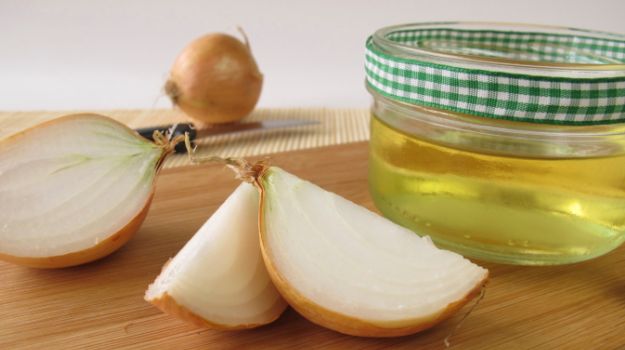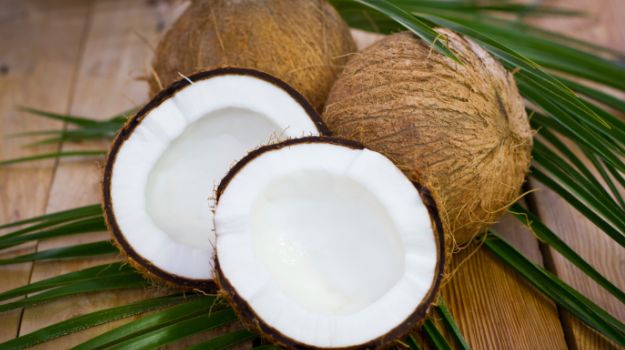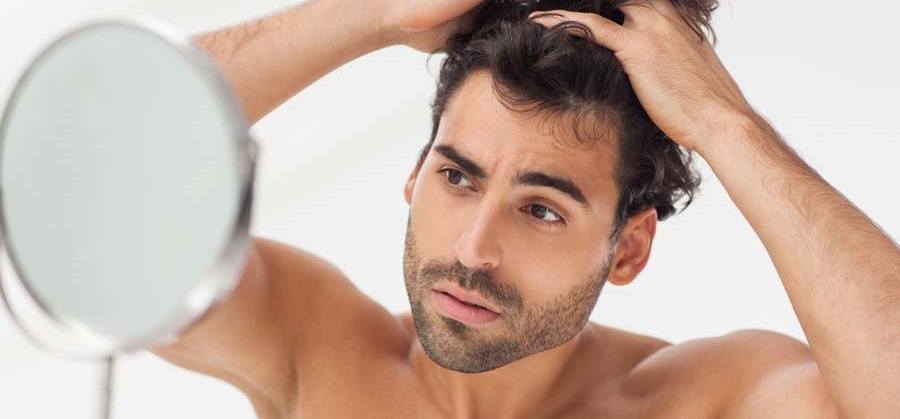Hair Growth: 7 Natural Tips to Make Your Hair Grow FasterWith the monsoons right round the corner, it is time you start paying a little more attention to your hair. Get rid of those expensive, chemical leached hair products, and say hello to natural remedies. There’s nothing like making the most of what nature has to offer. Our hair is made up of a protein called keratin that is produced in the hair follicles. As follicles produce new hair cells, old cells are being pushed out through the surface of the skin at the rate of about six inches a year. The hair that you can see is actually a string of dead keratin cells. An interesting fact is that an average adult has about 100,000 to 150,000 hair strands and loses up to 100 of them a day. Therefore, finding a few stray hairs on your hairbrush is not necessarily a cause for alarm. Initially, hair loss was seen as a sign of ageing, but in the urban scenario with everyone leading a hectic lifestyle, it has become a reason for worry for many. There are various causes for hair loss, ranging from medication, hormonal imbalance, the kind of diet you consume work stress. As a habit, we all look for an instant chemical remedy for hair loss for quick results despite being aware of its many harmful consequences. Going natural is the best solution for hair problems, since it doesn’t have any side effects and its results are long lasting. Here’s bringing you seven easy and effective home remedies for hair loss. Most of the ingredients for these quick fixes are available in your own kitchen! The Magic of Nature 1. Onion Juice – This remedy is regarded as one of most effective and oldest ones. The reason behind is that it contains sulphur that boosts collagen production in the tissues and helps in the re-growth of hair. Don’t let its strong smell keep you away from using it, because it goes off just after one rinse. To try this remedy, cut a few slices of onion and squeeze out its juice (either by mashing it or grating it) and apply it on your scalp for about 10-15 minutes. Let it work its magic and then rinse it off with a mild shampoo. Quick tip: You can substitute this with potato juice as well. Do you Suffer From Falling Hair Nightmares? 2. Coconut Milk - According to Dr. Blossom Kochhar, Chairperson, Blossom Kochhar Group of Companies, the most effective remedy for natural hair growth is the use of coconut milk because it is rich in iron, potassium and essential fats. Her remedy, “takecoconut milk from a fresh coconut (do not purchase the coconut milk - take it out meticulously from a fresh coconut). To it add half a squeeze of lemon, 4 drops of essential lavender oil. Mix it thoroughly and apply it on your scalp, leave it on for 4-5 hours and then rinse it off.” 3. Apple Cider Vinegar – This vinegar gently cleanses the scalp and maintains the pH balance of the hair thereby accelerating hair growth. Start for making a diluted solution by mixing 75ml of it in one litre of water for a larger batch or 15 ml of it to a cup of warm filtered water for a smaller batch. To apply this solution, use it as a final rinse after washing your hair. This will also give your hair an added shine and boost hair growth. 4. Make your Own Egg Mask – This home remedy is used all over the world for quick and natural hair growth. As we know, eggs contain high levels of proteins which help in the formation of new hair. It is also rich in sulphur, zinc, iron, selenium, phosphorous and iodine. For the egg mask, separate one egg white in a bowl and add one teaspoon of olive oil ( you can also use grape seed oil or lavender oil )and honey. Make a paste of it and apply it all over your hair and scalp for about 20 minutes. Rinse it off with cool water and some shampoo. Quick tip: Egg masks work wonders for a glowing and healthy skin. Fenugreek– This herb is also an age-old remedy for hair growth problems. It contains proteins and nicotinic acid; protein-enriched diets have been known to encourage stimulation of hair growth. Add a tablespoon of this herb and water in a grinder till a smooth paste it formed. Add a little coconut oil (or milk) to it and apply on your hair and scalp for half an hour. Wash it off with a mild shampoo. Not only will this remedy help you for hair growth but it will also protect the natural colour of your hair. 6. Green Tea – Now you have the perfect solution for those used tea bags that you throw away daily. Green tea, as you know is super rich in antioxidants and that helps in boosting hair growth and preventing hair loss. Apply warm green tea (from the used tea bags) over your scalp and leave it for an hour. Wash it off with cool water. 7. Indian Gooseberry (amla) – This magical fruit is a powerhouse of nutrients. It’s rich in Vitamin C and that accelerates hair growth. All you need to do is, mix 2 teaspoons of amlapowder or juice with equal amounts of lime juice and let it dry. Rinse it off with some warm water. It will also prevent hair pigmentation.
Don't Be Fooled by These Four Hair Loss TreatmentsAs the demand for cosmetic treatments continues to grow, some marketers have fallen for the temptation of presenting certain types of products and treatments as being more than they are. There are a lot of treatments out there that promise much, but don't always deliver. One of the top offenders: hair loss treatments. First, it's important to point out that hair loss is a treatable medical condition with a strong medical industry behind it --it even has its own board-certification program for doctors and a number of medical research organizations. However, like many other cosmetic fields, it is also rife with misinformation, questionable products and unqualified doctors. The Food & Drug Administration has done a somewhat reasonable job in recent years of cracking down on phony hair loss products and exaggerated marketing claims. However, many consumers still get fooled each year by misleading products, online ads, inappropriate expectations of what potential treatments can do, and doctors who lack the experience and tools to properly treat and track them. Here are four hair loss treatments that consumers should watch out for: Hair Loss Brushes - One persistent hair loss myth is that stimulating the scalp with magnets, brushes and massagers can improve blood circulation to the hair follicles and therefore reduce hair loss and improve new hair growth. There is no reliable medical evidence to support this claim. While there are real medical treatments to stimulate hair follicles and help improve blood circulation - like minoxidil, low level laser therapy and platelet-rich plasma - this can't effectively be done via a special hair brush or scalp massager. Don't get fooled! Herbal Supplements - Good nutrition and certain supplements like biotin and marine-derived proteins and polysaccharides can help support hair quality. However, it's important to keep expectations realistic. A vitamin isn't going to stop hereditary hair loss or regrow hair from scalp where follicles are already dead and gone. Only FDA-approved medical treatments like minoxidil and finasteride have been extensively proven to slow, stop and reverse hereditary hair loss. And only surgical hair transplantation can regrow hair where severe depletion of hair follicles has occurred. Minoxidil - Speaking of minoxidil, this treatment also requires a disclaimer. Although it is FDA-approved and has proven science behind it, the catch is that minoxidil doesn't work for everyone. In fact, over-the-counter minoxidil may only work well in about 38.3 per cent of patients, according to medical studies. Studies suggest that a patient has to have an active enzyme called "sulfotransferase" in order for their hair follicles to respond to minoxidil treatments. It is this enzyme that converts topically applied minoxidil into the active chemical (called minoxidil sulfate) that stimulates the follicles. Not everyone has enough sulfotransferase to "activate" minoxidil. There may be other biological roadblocks too -- like inflammation at or around hair follicles in the scalp and other factors, which can also affect minoxidil's action. The bottom line for patients is that there's a 65 per cent chance that standard over-the-counter minoxidil won't help you. Instead, you may require a prescription for a specially formulated, compounded minoxidil solution for optimal results. A new "minoxidil sensitivity' test will be out soon in the US, which can pre-determine if a patient is likely to respond to standard over-the-counter minoxidil before they start the treatment. Hair Transplants - Thankfully, "hair plugs" are a thing of the past, but it's important for patients to realize that today's hair transplants still don't always turn out the way they should. The biggest problem is that many unqualified doctors (many of which are not certified by the American Board of Hair Restoration Surgery) offer this procedure. The risks for hair transplant patients include surgical complications, infections, scarring, poor density and unnatural looking results. Another problem is that many doctors and large national clinics still mostly perform the traditional type of transplant called the "strip" or "linear" harvest technique instead of the less invasive "follicular-unit extraction" (also called FUE). With a strip-harvest procedure, a long linear strip of the scalp is removed ("harvested") from the back of the head in order to supply the permanent follicles for redistribution. Patients are left with a permanent linear scar --like the one actor Jeremy Piven was spotted with back in 2010. This procedure can be painful and requires considerable downtime and activity restrictions during healing. Slideshow continues after slideshow Buyer Beware - It's important for consumers to speak directly with a medical doctor who specializes exclusively in hair loss before starting any treatments or undergoing a surgical procedure and do their best to avoid dangerous cut-rate/discount clinics and those that employ non-medical salespeople. Routine follow-ups using scientific measurement tools will help track your progress and determine if changes to the regimen are needed.
The good news is that there are many hair loss treatments that can work well for both men and women when used correctly, consistently and in the proper combination depending on hair loss status and goals - like FUE hair transplantation, specially formulated minoxidil, low level laser therapy and scientifically formulated nutritional supplements. The key is doing your homework and due diligence to avoid getting fooled! You can find qualified hair restoration specialists at the American Board of Hair Restoration Surgery's registry of board-certified doctors, as well as the International Society of Hair Restoration Surgery's physician directory. Directory of surgeons accepted by the International Alliance of Hair Restoration Surgeons, a Consumer Organization physician listing. Source: www.baumanmedical.com Can hair-loss concealers "suffocate the follicle"? What are the potential side-effects?With products such as Caboki, there have been many rumors about the fibers "suffocating" the hair follicle, esp if the pores open due to heat or sweating. I am a Norwood 3 at worst, so I can get by with a concealer for the time being, and do plan to get a transplant down the road when I lose most of the hair from the temples. Can concealers potentially speed up the hair loss? Many on the internet swear that they do; I was hoping an MD can separate the fact from fiction. Doctor Answers (4) Hair is dead, so you really cannot "suffocate" the hairs. You can use concealers safely. Hair is dead, so you really cannot "suffocate" the hairs. You can use concealers safely. If you have issues see a doctor for an exam. Hair Loss & Concealers It is a myth that hair loss concealers cause damage to the hair. These are usually organic or synthetic keratin fibres which are applied on the scalp and cover your scalp. They do not have any interaction with the hair follicles. Why people feel so ( concealers causing hair loss) is because the underlying condition i.e. Androgenetic Alopecia keeps on progressing in the absence of the medical treatment and the person feels that it is the hair fibre which is causing the hair loss. Suffocating or Clogging Hair Follicles There are many myths and urban legends about hair loss, particularly on the internet, and this is one of the more persistent ones. Hair gets its oxygen from its blood supply at the bottom of the follicle, underneath the skin, not from the top! Hair fibers are safe and harmless for the most part. Do me a favor though - now that you know your ongoing hair loss is not caused by the hair fibers, act to prevent the relentless loss! Don't just wait for it to happen and then expect a hair surgery to "fix" you, because that is not how it works. Hair surgery is best as an adjunct - working WITH therapies like finasteride, minoxidil, LLLT and ketoconazole/zinc shampoos - NOT all by itself! You will look better in the long run and your surgeon will be able to get a better result for you if you keep as much hair as you can in the first place. Scalp camouflaging agents don't suffocate
It's a myth that these agents suffocate the hair follicle. Hairs don't need to 'breathe' - they get they oxygen and nutrients from blood vessels deep down below in the skin rather than from diffusion up above. Topical keratin based hair fibers are safe. Rarely, they irritate the scalp and rarely some of the dyes cause problems. But these are fairly rare products. Most individuals who use these products have genetic hair loss - which is a progressive condition. Generic hair loss gets worse over time if it is not treated. A lot of people using topical fibers will notice their hair is getting worse and worse. Not from the fibers, but from the natural progression of genetic hair loss. We've outlined all the side effects of these topical camouflaging agents in our 2008 paper published in the Dermatology Online Journal. A link is below. Hope this information helps. |
AuthorBy Masaakii Archives
May 2024
Categories
All
|












 RSS Feed
RSS Feed